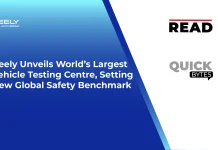Hach brings to the global water market the DR1300 FL portable fluorometer and three wholly new detection test methods for free chlorine, total chlorine and sulfite. These are the first fluorescent chemical tests for chlorine of their kind to hit the market. The novel, patented fluorescent sulfite test reaches orders of magnitude lower than currently marketed sulfite tests.
Also Read: Airspan Networks Holdings Inc. Reports 2021 Results, With Strong Momentum in 5G Private Networks
Improving on existing colorimetric DPD-based methods, Hach fluorescence-based, non-DPD chemistries use a different chemical reaction for detecting chlorine. This allows for far more sensitive tests with little to no interference from other oxidants. Additional benefits are a decrease in toxic reagents and chemical waste, as detector chemical addition is a fraction of traditional tests.
Packaged in convenient dropper bottles, the new Hach tests are remarkably easy to use for water professionals who manage and optimize dechlorination processes. This solution helps customers avoid chlorine damage to RO membranes and other valuable assets with simple ultra-low range testing in QA/QC labs and on-site.
“Until now, ultra-low range laboratory residual chlorine measurements often have been inadequate, inefficient, or too difficult,” says Darren MacFarland, Director of Global Chemistry for Hach. “We’re thrilled to bring simple and reliable fluorescence technology to market with the DR1300 FL solution to help our customers gain greater insights into critical parameters through accurate, ultra-low range measurements. Ultimately, this solution helps our customers protect what’s important to them – their assets, budget and time.”
The DR1300 FL portable Fluorometer, manufactured by Pyxis®, and ULR Fluorescence tests provide critical part-per-billion level chlorine and sulfite control with new fluorescence chemical formulas. The formulas specifically target chlorine or sulfite to simplify ULR testing procedures without losing sensitivity in the target measurement range. Users can reliably detect chlorine from 2 parts per billion to 100 parts per billion, and sulfite from 6-500 parts per billion. This accuracy, combined with new reliable technology and expanded dechlorination monitoring parameters, gives users the confidence they need to make better dechlorination decisions.
“We’re exploring groundbreaking fluorescence technology and continuously creating new ways to help our customers create process efficiencies,” says Tim Ayer, Global Product Manager for Hach. “For example, our ULR CL17sc and DR1300 FL were developed to work together to maximize the benefit to our customers. When our customers use both solutions, they get the assurance of redundancy and verification, the convenience of online readings and insightful data to make the most-informed decisions. When our customers can win like that, it’s a win for us.”




